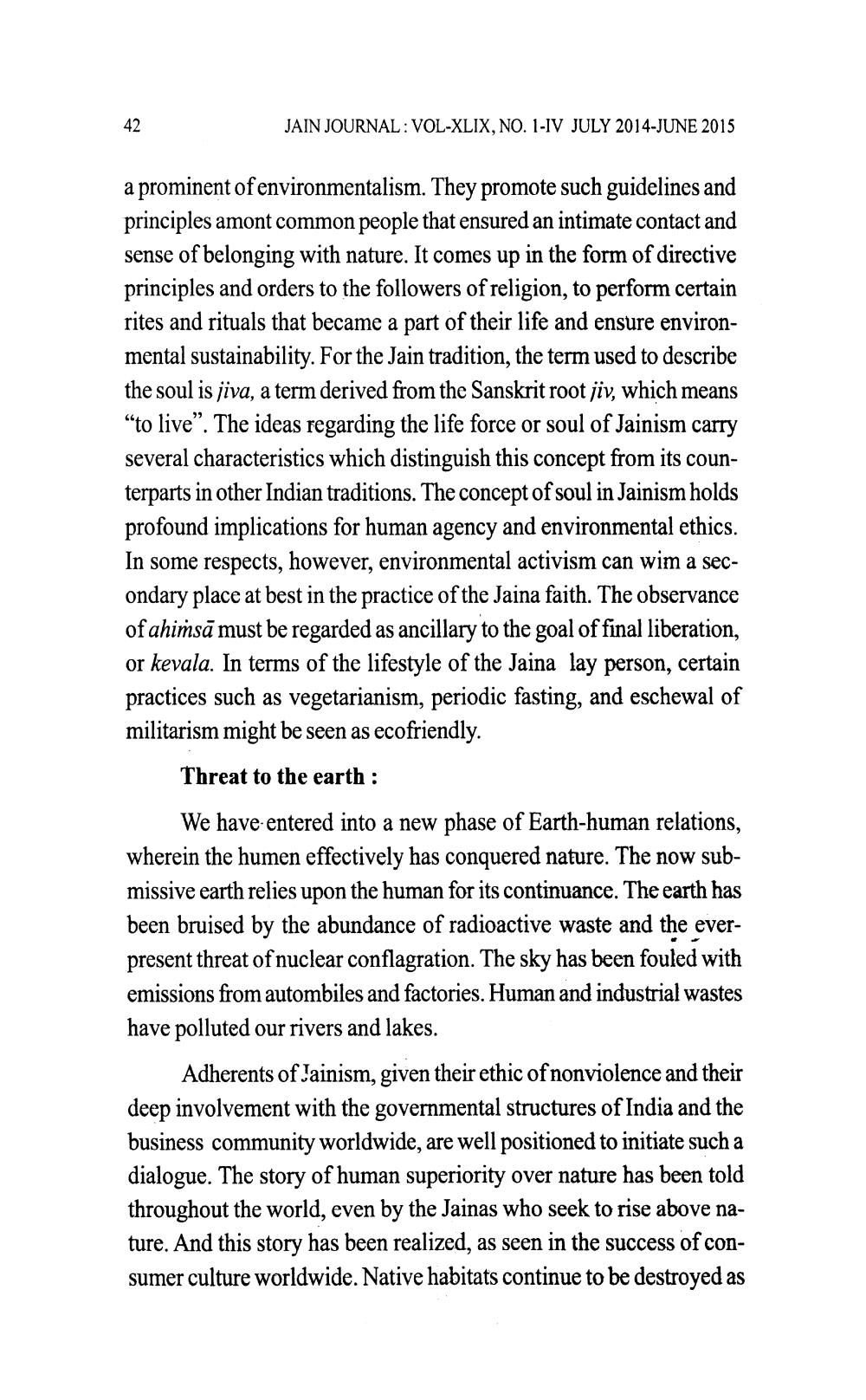________________
JAIN JOURNAL: VOL-XLIX, NO. 1-IV JULY 2014-JUNE 2015
a prominent of environmentalism. They promote such guidelines and principles amont common people that ensured an intimate contact and sense of belonging with nature. It comes up in the form of directive principles and orders to the followers of religion, to perform certain rites and rituals that became a part of their life and ensure environmental sustainability. For the Jain tradition, the term used to describe the soul is jiva, a term derived from the Sanskrit root jiv, which means "to live”. The ideas regarding the life force or soul of Jainism carry several characteristics which distinguish this concept from its counterparts in other Indian traditions. The concept of soul in Jainism holds profound implications for human agency and environmental ethics. In some respects, however, environmental activism can wim a secondary place at best in the practice of the Jaina faith. The observance of ahimsā must be regarded as ancillary to the goal of final liberation, or kevala. In terms of the lifestyle of the Jaina lay person, certain practices such as vegetarianism, periodic fasting, and eschewal of militarism might be seen as ecofriendly.
Threat to the earth :
We have entered into a new phase of Earth-human relations, wherein the humen effectively has conquered nature. The now submissive earth relies upon the human for its continuance. The earth has been bruised by the abundance of radioactive waste and the everpresent threat of nuclear conflagration. The sky has been fouled with emissions from autombiles and factories. Human and industrial wastes have polluted our rivers and lakes.
Adherents of Jainism, given their ethic of nonviolence and their deep involvement with the governmental structures of India and the business community worldwide, are well positioned to initiate such a dialogue. The story of human superiority over nature has been told throughout the world, even by the Jainas who seek to rise above nature. And this story has been realized, as seen in the success of consumer culture worldwide. Native habitats continue to be destroyed as




